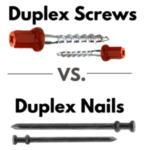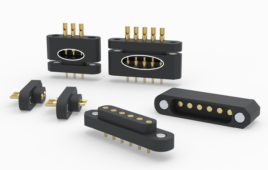~ Article courtesy of Advance Components

Projection weld pins have a unique design with three precise weld projections located either on the top of or under the head, depending on the type. The purpose of the three projections is to provide increased stability and strength during the welding process.
Several benefits are associated with the use of projection weld pins for secure welding projects. These pins are specifically designed for use in projection welding processes, which is a type of resistance welding technique used to join metal parts by applying pressure and electrical current.
It’s commonly used in various manufacturing industries for the assembly of automotive components, appliances, and other metal structures.
Projection weld pins are ideally sized and shaped for projection welding, and can provide a strong, secure bond. These fasteners have three projections (little bumps), or metal spots located either on the top or underside of the pin’s head. The pins selected will depend on the requirements of the welding project.
Let’s explore the differences and benefits of “on top” or “under the head” projection welding pins.
On top of the head
This type of projection weld pin is designed with three precise weld projections on the head, which attaches to the underside of the opposing panel — without the need for a through-hole.
These weld fasteners are used when a smooth outside surface is necessary for the pin to fasten into place. The cold-forged construction of the weld pin provides a strong connection on the bearing surface and acts as a stop, hinge, or mounting pin.
Weld pins with the three projections on top need no mounting hole, thereby providing durability and a smooth appearance. As these pins are welded permanently to the component surface, they’re ideal for permanent welds in concealed locations and blind applications.
Under the head
Welding pins with the three projections on the underside of the pin head are used in through-hole applications. The three precision projections permit exact positioning and balance for an optimum weld.

“On top of the head” projection weld pins, which are ideal for permanent welds in blind applications.
In through-hole applications, the head of the pin is welded to the metal component, making the joint stronger than the surrounding area. The strength of this connection makes this type of weld pin ideal for hinge pins, bearing surfaces, structural supports, and stops.
Advantages
There are several reasons for choosing projection weld pins in welding applications. The projections on the pins serve to control the size and shape of the weld. During projection welding, the pins are positioned between the parts to be joined, and an electrical current is passed through the pins. The current generates heat at the projection, causing it to melt and form a localized weld.
The pressure applied during the welding process ensures proper contact between the pin, the parts, and the electrodes, promoting the formation of a strong and reliable weld.
Projection weld pins also help control the heat input, concentrate the weld energy, and provide accurate alignment during the welding process. Overall, projection weld pins are essential fasteners for projection welding projects, enabling the efficient and precise joining of metal parts.
Pros of projection weld pins
- Ensure strength and durability
- Provide consistent weldability
- Have a cupped head that reduces time and potential jams
- Offer a design that limits misfires and tears
- Impart a conical point that reduces the overall weld time










Tell Us What You Think!